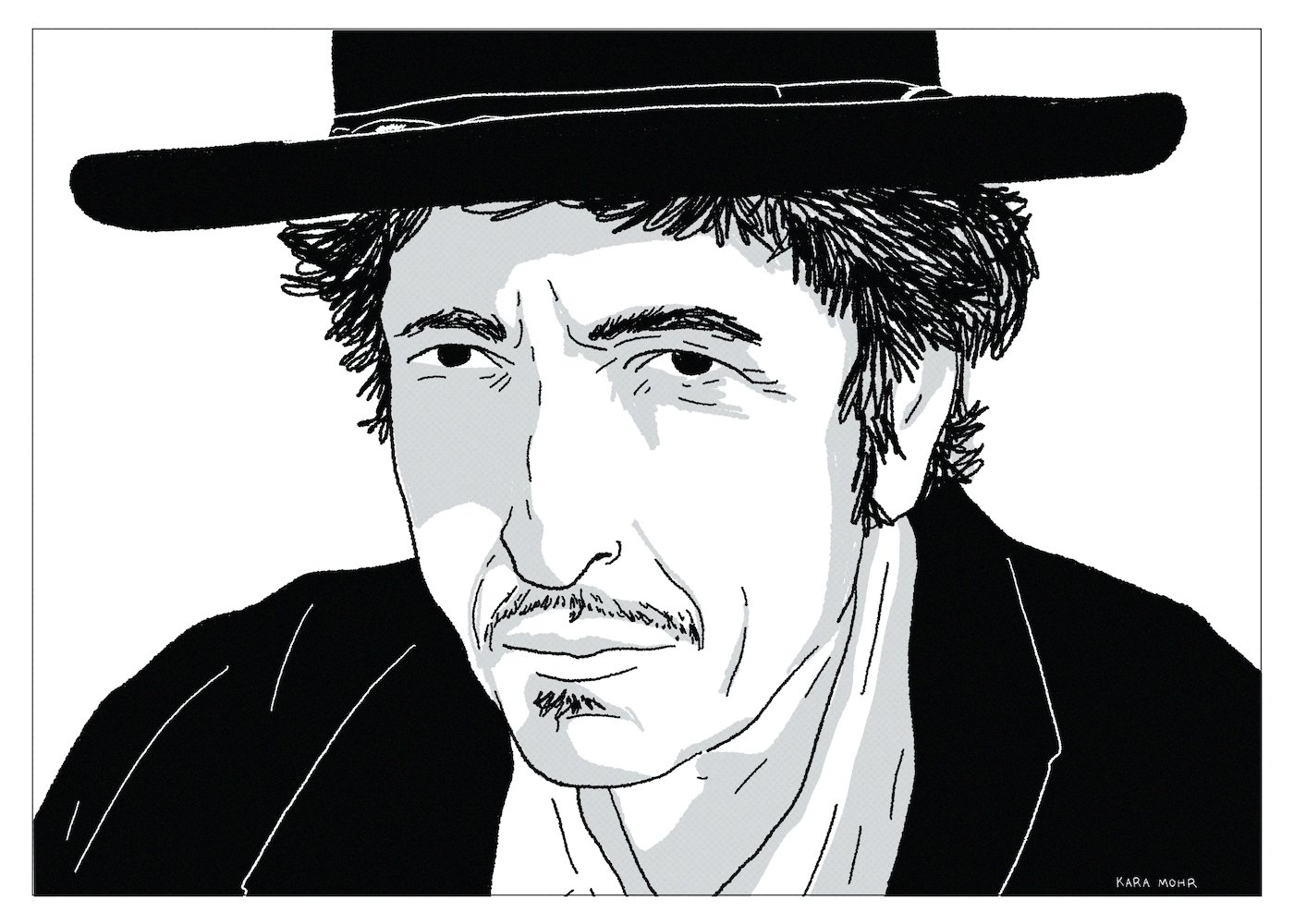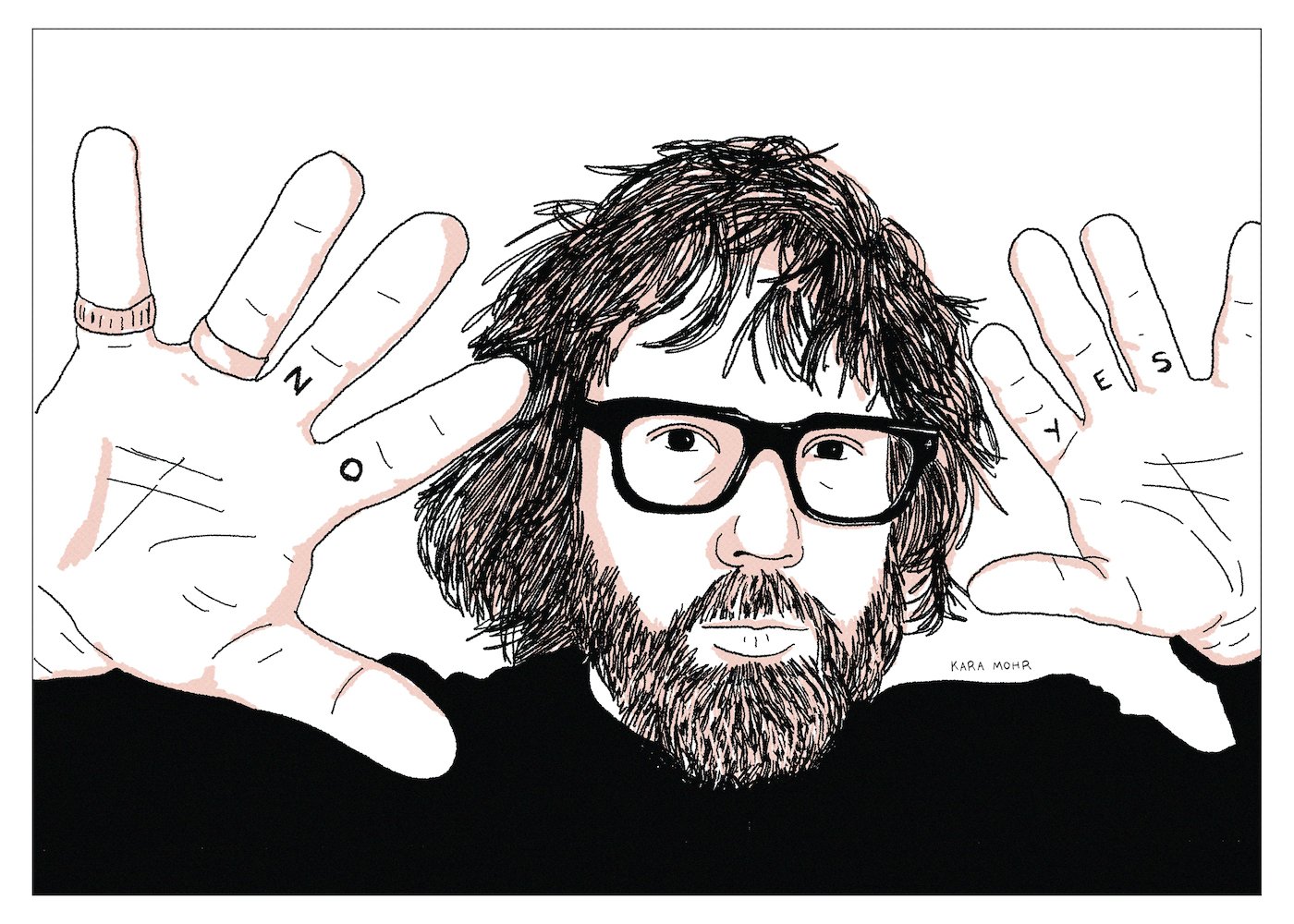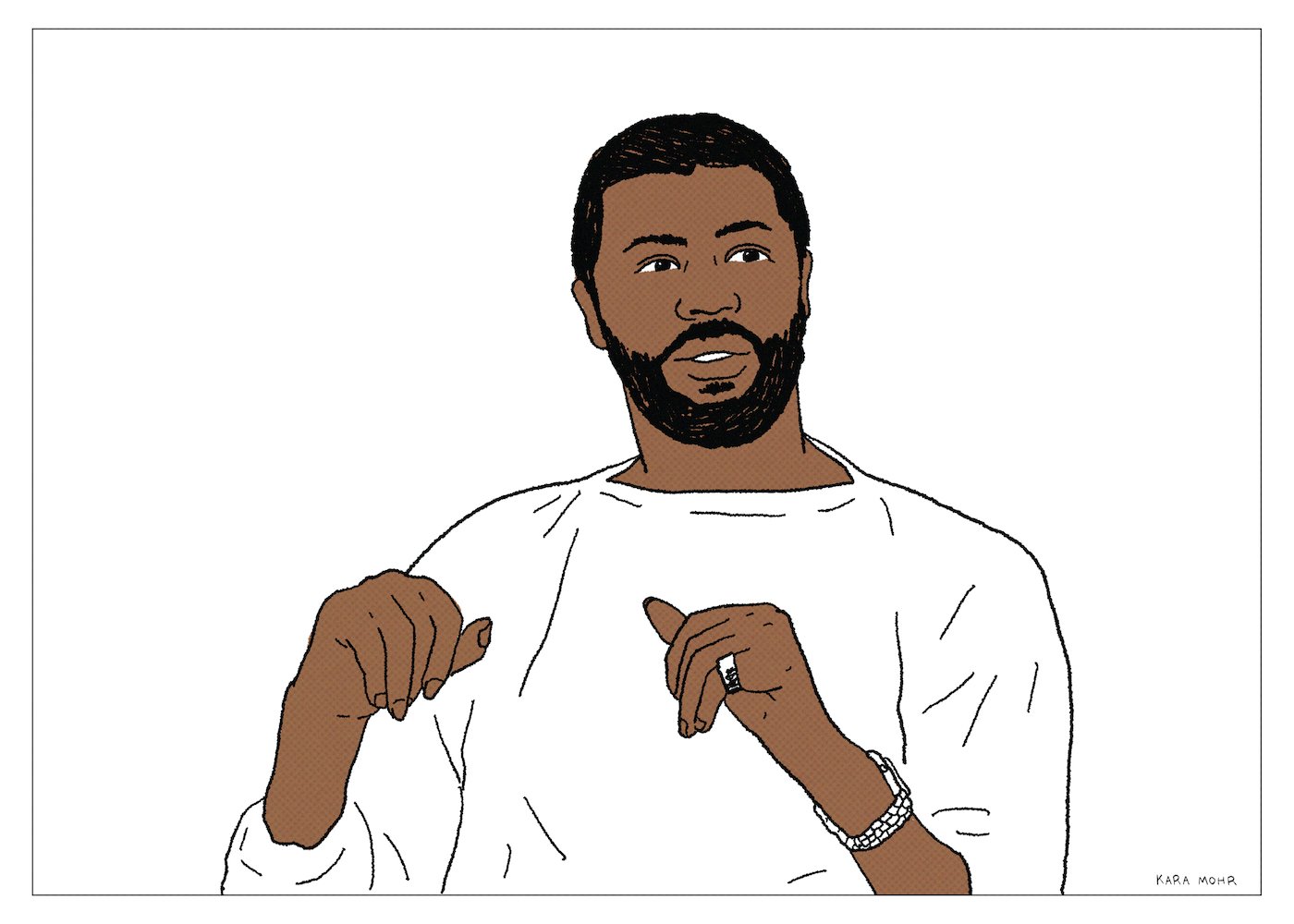
George Michael “Patience”
Eight years removed from his last album of originals — after a very public arrest, after the death of his mother and his partner — George released what would become his swan song. Having lost most of his U.S. fanbase, “Patience” was less a triumphant return and much more an album for aging diehards. Like all George Michael albums, it was an extremely personal one. But, it was also a radically honest album. Prince employed characters and double entendres. Michael Jackson used masks. And Madonna had her costumes. But there was always a sense that George was telling the absolute truth. That what we were hearing was not a “version of George Michael,” but the man himself.

John Tesh “Live at Red Rocks”
Recorded in the summer of 1994, “Live at Red Rocks” first aired on PBS in the Spring of 1995 and hit stores just a few months later. In the thirty plus years since, it’s become synonymous with both “Nineties New Age” and “PBS fundraising.” Which is to say that it is simultaneously elaborate (not minimalist or tranquil) and cheap (free with donation). As an album of recorded music, it is almost farcical. But as a concert movie, it's positively gripping. For one windy night, against an breathtaking backdrop, accompanied by the Colorado Symphony Orchestra, and dressed in a three piece purple suit, John Tesh — the co-host of "Entertainment Tonight" — thrilled a rapt audience of dedicated philanthropists and Olympic gymnastic enthusiasts.

Joey Ramone “Don’t Worry About Me”
“Don’t Worry About Me” is almost exactly what you'd expect from a Joey Ramone on death's doorstep solo album. Which is to say it’s alternately frightened, bored, unfinished, funny, maudlin and brilliant. Joey croons, bleats and tawks his way through eleven tracks, all (but one) of which clock in under four minutes, but none of which are under two. The (by Ramones’ standards) mid-tempo nature of “Dont Worry About Me” — the seeming lack of rush — suggests a pace afforded by age, poor health and, most of all, no Johnny Ramone. Johnny had zero time for bullshit. But, especially at the very end, Joey had all the time in the world for it.

Bob Dylan “Together Through Life”
If Past Past Prime Van Morrison sounds like disgruntled Soul, and if Past Past Prime Leonard Cohen sounds like breathy Tao, Past Past Prime Dylan sounds more like Willie Nelson. It’s the sound of an artist working tirelessly, but with an air of retirement. The stakes are lower. There’s nothing to prove. And even if he had an agenda it would be swallowed up by his voice. That voice. The voice of relief and release. The voice of self-knowledge and self-acceptance. If you squint your ears, those post-”Time Out of Mind” records — from “Love and Theft” through “Tempest” — sort of blend together. The bands vary. Stories and settings change. But they share a common pace, range and — most of all — voice.

Peter Frampton “Now”
Frampton’s appeal was something like Xanax — it was a mild but neutered sensation. He possessed a rare capacity to elicit pleasure without the charge of Rock and Roll. Which is not to discount his talent so much as it is to explain why he was so positively vital in 1976 and so completely antithetical by 1977 — the year in which “Rumors” and “Never Mind the Bollocks” exploded with feelings. Amazingly, 1976 was also the year that the U.S. patent was awarded for Alprazolam — known commonly as Xanax. Yes — Xanax arrived at precisely the same time that Peter Frampton dominated airwaves and record store shelves. However, it did not take long for the effects to wear off and for everyone — including no doubt Frampton himself — to realize that we needed to actually feel the feelings.

Jimmy Buffett “Fruitcakes”
Buffett’s eighteenth studio album was both his first to reach the top five on the sales charts as well as his first Platinum-seller since the 1970s. Its title is a nod to fans — those sun loving, clothing optional weirdos who sometimes get drunk and say silly things but who possess a positively essential joie de vivre. It almost goes without saying that most Parrotheads are not clothing optional weirdos. But it’s also worth saying that many of the teachers, lawyers and middle-managers that comprise his fanbase do fantasize about being carefree, clothes-free beach dwellers. And that is precisely Buffett’s appeal — how he taps into a primal need to escape. An urge to — every once in a while — exist in a liminal space between feeling warm and feeling nothing at all.

Jonathan Davis “Black Labyrinth”
The Jonathan Davis who released “Black Labyrinth” looked remarkably similar to the one who’d conquered the world on “Follow the Leader.” Same dreads. Same black glasses. Same eyebrow ring. Same scraggly beard. But in 2018 the almost forty-seven year old was an elder statesman, reclaimed by multiple generations as a pioneer and a survivor. On the surface, he was the exact same guy he’d always been. But inside he was a completely different man. And according to the press that accompanied his solo debut, Davis was the completely different sort of man who was interested in the history, politics and music of the Middle East. Which meant that “Black Labyrinth” necessarily included sitar, duduk, tablas and (double) violin. Which meant that I was more than a little reluctant to check it out. Which meant that—just as I’d done a quarter century earlier—I was steeling myself to dislike something I’d not yet heard.

Steve Earle “I Feel Alright”
In 1996, having shaken off five years of rust, sixty days in jail and a couple decades of addiction, Steve Earle released “I Feel Alright.” Whereas 1995s “Train a Comin’” found him looking backwards, “I Feel Alright” was a completely present album. It was vintage Earle, after the pink cloud had dissipated—honest, aching, and feeling “alright.” Which is to say he was not feeling great. But also he was not feeling awful. It was a hedge—somewhere between cautious and optimistic. “I Feel Alright” is the ultimate one day at a time response to the question, “How you doing?” As a description of Earle’s state of mind, it sounds appropriate. As a title for his sixth studio album, it feels like a radical understatement.

Richard Lloyd “The Radiant Monkey”
Following their unexpected reunion in 1992, Richard Lloyd and Tom Verlaine maintained a polite working relationship born from financial necessity and creative compatibility. The fallout from the first Television breakup had cost Lloyd a good deal of his commercial prime. The sequel, meanwhile, was a long, sputtering, part time concern. Lloyd made a small splash in 1991 for his appearance on Matthew Sweet’s “Girlfriend.” In 2001 he quietly released his first album in more than a decade. But, by 2007, he’d had enough. He’d had enough of waiting to make another Television record. He’d had enough of Tom being Tom. And so Lloyd finally resolved that—no matter how much he admired Tom Verlaine as an artist or even as a friend—he did not want him as a boss any more. Thirty-four years after he first joined the band and thirty-two years after he first quit the band and twenty-nine years after Verlaine broke up the band, Richard Lloyd quit Television and released “The Radiant Monkey,” his fifth solo album.

Ed Kowalczyk “The Flood and The Mercy”
Today, Live is Ed Kowalczyk plus paid studio and touring musicians. Ed’s childhood friends—Patrick and the two Chads—were relieved of their duties after years of lawsuits, countersuits and shady dealings with a shady con man. Meanwhile, Kowalczyk, now a fifty-something, rat-tail-less, father of four, charms fans on Totally Nineties tours and delights deejays on retro adult radio formats. But in between “Alive,” Ed’s confusingly named solo debut, and his return to Live, he put out another solo album—a commercial failure and a critical “nope.” Middle-aged me had zero interest in this record. But seventeen year old me—the me who was still a work in progress, who was so open to new things and who’d convinced himself that Live were cool and deep and important—felt otherwise.

Boeckner “Boeckner!”
At just eight songs and barely thirty minutes, “Boeckner!” is closer to EP than LP. And if judged as an EP — the format which Wolf Parade chose to thrice introduce themselves way back when — I’d call it a success. A couple misses, a couple stash aways and four songs that justify the titular exclamation point. But considered as an LP, “Boeckner!” does feel a bit small. Or rather a little short. Which sends me back to Joe Strummer — Boeckner’s spiritual forebear and the most important guy in the most important band in the world who never had the will or the want or the whatever to be that guy outside of The Clash. As magnetically cool and as evidently smart and talented as he might be, Boeckner — like Strummer, like most of us — needs a partner. Twenty years with Spender Krug. A glorious season with Britt Daniel. Five plus years with Alexei Perry. And, for nearly decade with Devojka, Boeckner’s bandmate in Operators and co-writer on half of “Boeckner!”

Billy Joel “Turn the Lights Back On”
Billy had been stashing away ideas for years — parts of melodies, little hooks, half bridges, hummed choruses — but could not, would not complete a song. And so, rather than push him to the brink, Freddy Wexler politely requested to check out some of those song scraps. And eventually, through a combination of talent, elbow grease, Wayne Hector and Arthur Bacon, “Turn the Lights Back On” was born. The story is vague enough to be true. But it is also vague enough to make me ask, “Did Billy write the song at all?” The more I considered it, the more plausible it seemed that a very smart AI might have produced “Turn the Lights Back On.” Maybe Billy Joel’s new single was an AI deep fake. Maybe its perfection was actually an uncanny valley.

Bry Webb “Run With Me”
Some bands are corporations, like The Rolling Stones. Some are communes, like Big Thief. Some are gangs, like The Clash. The Constantines, however, were more like a union — the genuine article. They were brothers in arms, in jeans and flannel. But when their mission inevitably bumped up against the realities of family and finance, the union dissolved. The miracle was not that The Cons broke up. The miracle was that they were so true and so committed for as long as they were. Just four albums. Not even a decade. But they never stopped waving the flag. Never stopped working. Which is why Bry Webb needed a break. Why, first, he left for Montreal. And then to Guelph, outside Toronto, where he started anew — as a husband, a college radio programmer and the maker of quiet, plaintive songs about the glow and glare of new fatherhood.

Kevin Drew “Aging”
Since “You Forgot It in People” — the record that a generation made out to and broke up to — every Broken Social Scene album has been an event. The reveal of who’s in and who’s out and the inevitable comparisons to their masterpiece. But while they have all been events, they have been more so celebrations. For all of the gothic romance of “Lover’s Spit,” Kevin Drew sure seems like a jubilant fellow. “Hug of Thunder” is his brand. He’s the glue and the vibes. But he’s also a guy who exists outside of his collective. In between those BSS records, Drew has been releasing lower stakes solo albums. Initially, with many members of Broken Social Scene. Then with a few. And then, finally, all alone.

Barry Manilow “Here at the Mayflower”
Barry Manilow has sold more than eighty-five million albums — that’s more than Tom Petty, Nirvana or KISS. Once upon a time, he was the yellowing wallpaper of American music. For the better part of a decade, his songs were all over the radio, in grocery stores, waiting rooms and elevators. But, by 1984, years after “Mandy,” he’d hit a wall. Yes — the man who wrote the songs (but who I later learned did not write “I Write the Songs”) stopped writing the songs. After “2:00 AM Paradise Cafe,” it would be another twenty years before Manilow produced another album of originals. When he did, though, it was a doozy. “Here at the Mayflower,” from, 2004, was the apotheosis of Barry Manilow — an album of Swing, Mambo, Pop, Disco and Cabaret tunes about the apartment building in Williamsburg, Brooklyn where he grew up. It was the record that Terri Gross and Oprah Winfrey desperately wanted. It was the concept album he was born to write.

Joe Cocker “Heart and Soul”
“Heart and Soul” was Cocker’s response to Johnny Cash and Rick Rubin — simple arrangements of classics, alongside unexpected takes on Modern Rock. Cocker, who had not flirted with contemporary material in decades, decided to cover (like Cash) U2’s “One” and R.E.M.’s “Everybody Hurts.” But unlike The Man in Black, who mostly talk-sang his way through the “American Series,” leveraging the bottom of his one octave range, Cocker pushed the upper limits of his instrument. He was like the aged athlete attempting to match the records of his youth. Like Carl Lewis trying to run a sub ten second 100 meter sprint today, at the age of sixty-two. Joe Cocker could obviously not sing in 2004 like he sang in 1969. But that was the humanity and the tragedy of this project. On occasion, it was touching and beautiful. Elsewhere, though, it was like watching a former Olympian tearing their achilles and then still gutting out the race, howling and limping their way to the finish.

Teddy Pendergrass “Truly Blessed”
That was the conundrum Teddy faced in in the late Eighties — if and how to sing about sex from a wheelchair. After his accident, he was still a young man, closer to thirty than to forty. His sparkling smile was intact. His face was unscathed — in fact, he looked as handsome as ever. And while it is much harder to sing while seated, it is by no means impossible. As for everything else — the gliding onstage, the bend of the hips, the undressing, the working up a sweat, the showering and the burning hot oils — those were a lot more complicated. But Teddy did the work and made the transition. No, he was not the same person who drove a Maserati to perform at an arena full of women. He was something much less iconic but also much more sympathetic. He was an underdog — a redemption story.

John Mayer “The Search for Everything”
Between “amazing” and “insufferable” — that’s the line Mayer walks. He is preternaturally gifted — as a player, he rivals his heroes, Robert Cray and Eric Clapton. As a composer, his mastery extends far beyond his ostensible peers — Maroon 5, Jack Johnson and Jason Mraz. He has always been tall, dark and handsome. He’s always been a great interview — frequently too great. But it’s the speed and intensity of his amazingness, that unnerves. Going from Jennifer Love Hewitt to Jessica Simpson to Minka Kelly to Jennifer Anniston to Taylor Swift to Katy Perry in close succession. Hanging with Dave Chapelle one night and jamming with Bob Weir the next night. Or, the same night. Swapping Nikes for Uggs. Wearing shades that are more expensive than his already expensive shoes, and watches that are tenfold the cost of either. It’s all amazing. And it’s all insufferable. And, believe me, John Mayer knows it.

Jack White “Entering Heaven Alive”
Willy Wonka succeeded because he was more fun than he was weird — which is saying a lot because he’s really fucking weird. But the older Jack White got, the less we could detect the humor in his Wonka-ness. Where there was once “Sugar Never Tasted So Good” and “We’re Gonna Be Friends” there was now dystopian Nashville, Steampunk Blues and Art with a capital “A.” To be clear, I have absolutely nothing against any one of those things. But stripped of its wide-eyed delight, White’s music began to veer from strangely astounding into the realm of astoundingly strange.

Tom Jones “Darlin’”
Like Cher, Tom Jones had a teeny tiny waist. And, like Cher, Jones loved to show some skin once upon a time. Both were unafraid of tight pants. Both hosted popular TV programs — “This is Tom Jones” (1969 through 1971) being a precursor to Sonny and Cher’s variety shows. Both had famous marriages (Jones’ for its mystery and longevity, Cher for its popularity) and perhaps more famous relationships outside of their marriages (Cher with Greg Allman, David Geffen and Gene Simmons and Jones with Mary Wells and, apparently, two hundred and fifty fans per year). Both are known for their iconic, husky voices, though neither is proficient on any instrument. But, more than anything else, the thing that bound Jones and Cher was the thing that happened when they put it all together — the voice, the body, the moves, the attitude, the screen presence, the sex appeal. It was their unfathomable “toomuchness.”
